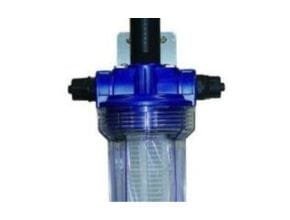Description
Seko Sensor Probe for Control In water-treatment systems, ensuring that water quality is always at its best – by balancing the variables that impact it – demands the most accurate measuring and analysis devices whether turbidity sensors or pool pH probes.
About Seko Sensor Probe for Control
SEKO’s sensors and probes are built with precision in mind and function in both internal and external water-treatment environments. Monitoring a limit value or building a closed control circuit is easy with our sensors – in an enormous range of measuring applications, from simpler water-treatment tasks requiring pool chlorine sensors to industrial process waters with more stringent requirements.
With a flexible range that’s suitable for liquids of varying concentrations, our series of sensors and probes have options designed to comply with water-quality parameters for temperature, pressure, contamination tolerance, and chemical resistance. Meanwhile, a virtually zero maintenance requirement contributes to a low total cost of ownership.
- pH
- ORP
- Electrical and inductive conductivity
- Chlorine and disinfectants
- Dissolved oxygen
- Turbidity
- Flow
The Model of Seko Sensors and Probes
Probes for pH
pH measurements are important in many processes. There is almost none where the pH value does not play a dominant role. All biological processes depend on the activity of enzymes because they show a pH optimum and lose their functionality if the pH is too low or too high. The pH value is measured in most processes using a glass electrode. This pH glass forms a thin gel layer in aqueous solutions that is highly selective to H+ ions. The pH-dependent potential of the gel layer is measured against a built-in reference electrode with a constant potential.

This reference electrode may be a silver wire in contact with solid silver chloride or a calomel electrode. In general, the pH value is a measure of the acidity or the basicity of an aqueous solution. In technical terms, pH is the negative logarithm of the activity of the solvated protons H+. It’s mostly explained as the measure of the proton concentration which is correct for dilute aqueous solutions.
SPH1
Low maintenance sealed unit with gel-filled reference cell suitable for general laboratory, swimming pools, and water monitoring and control plan.
SPH 2
Low maintenance sealed unit with gel-filled reference cell suitable for wastewater, drinking water, cooling towers, and irrigation.
SPH3 WW
Low-maintenance sealed unit with gel-filled reference cell suitable for wastewater, drinking water, cooling towers, fish farming, and galvanic process.
SPH4 HP
Low maintenance sealed unit with gel-filled reference cell suitable for wastewater, drinking water, fish farming, groundwater, and galvanic process.
SPH4 HT
Low maintenance sealed unit with gel-filled reference cell suitable for ammonia application, chromium plating, reverse osmosis, galvanic process, and bisulfite application
SPH4 LC
Low maintenance sealed unit with gel-filled reference cell by external refill suitable for highly acidic solutions, chromium plating, reverse osmosis, bisulfite application, and boiler feed water.
Features of Probes pH
SPH1
- Measuring range 2 – 12 pH
- Process temperature 0 – 60 °C
- Pressure range (relative to ambient) 0 – 6 Bar
- Body material Plastic; pH element Glass
- Ceramic diaphragm high accuracy
- Connection 6 or 1.5-meter cable with BNC and boot plastic cover
- Single and double junction with KCL Gel
SPH 2
- Measuring range 2 – 12 pH
- Process temperature 0 – 60 °C
- Pressure range (relative to ambient) 0 – 6 Bar
- Body material Plastic; pH Glass ;
- Pellon PTFE diaphragm high accuracy
- S8 connector (PG13,5 mm mechanical and S7 electrical)
- Single junction with KCL Gel
SPH3 WW
- Measuring range 2 – 12 pH
- Process temperature 0 – 80 °C
- Pressure range (relative to ambient) 0 – 6 Bar
- Body material Plastic; pH element Glass
- Diaphragm open hole
- S8 connector (PG13,5 mm mechanical and S7 electrical)
- Double junction with KCL Gel
SPH4 HP
- Measuring range 0 -14 pH
- Process temperature 0 – 60 °C
- Pressure range (relative to ambient) 0 – 6 bar
- Body material glass for high-temperature environmental
- pH element Glass; 2 single pore diaphragms
- S8 connector (PG13,5 mm mechanical and S7 electrical)
- Double junction with KCL Gel
SPH4 HT
- Measuring range 0 – 14 pH
- Process temperature 0 – 130 °C
- Pressure range (relative to ambient) 0 – 16 bar (25 °C) / 0 – 6 bar (130 °C)
- Body material Glass; pH element Glass ;
- 3 ceramic diaphragms high performance
- S8 connector (PG13,5 mm mechanical and S7 electrical)
- Double junction with KCL Gel
SPH4 LC
- Measuring range 0 -14 pH
- Process temperature -10 – 40 °C
- Pressure range (relative to ambient) 0 – 0.5 bar or higher if pressurization by side-arm
- Body material glass for low-pressure environmental
- pH element Glass; One sleeve diaphragm
- S8 connector (PG13,5 mm mechanical and S7 electrical)
- Double junction with KCL Gel
Probe Holder

Precise measurement of water-quality parameters :
- PSS3
- PSS7
- PSS-Plexi
Seko sensors and probes cover the following parameters:
- pH
- ORP
- Electrical and inductive conductivity
- Chlorine and disinfectants
- Dissolved oxygen
- Turbidity
- Flow
References: www.seko.com
Read More Articles :
- Knick PH Meter
- Leuze Sensor Automation Technology
- Digitron Temperature and Pressure Instrumentation
- Teknologi Dew Point dan Perbedaan Aplikasi Kinerja Udara Terkompresi
- Rika sensor






